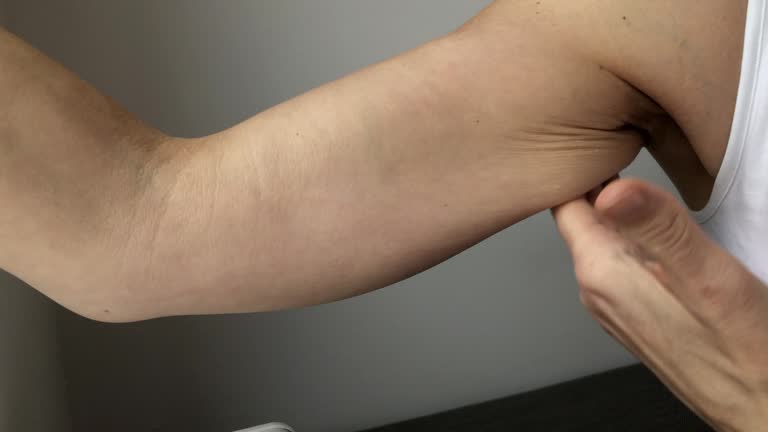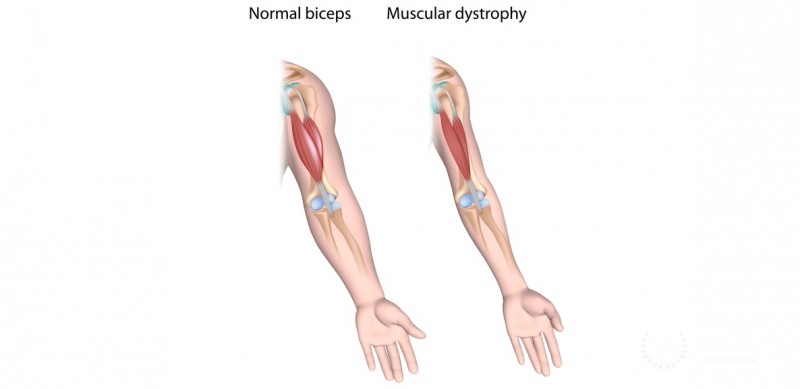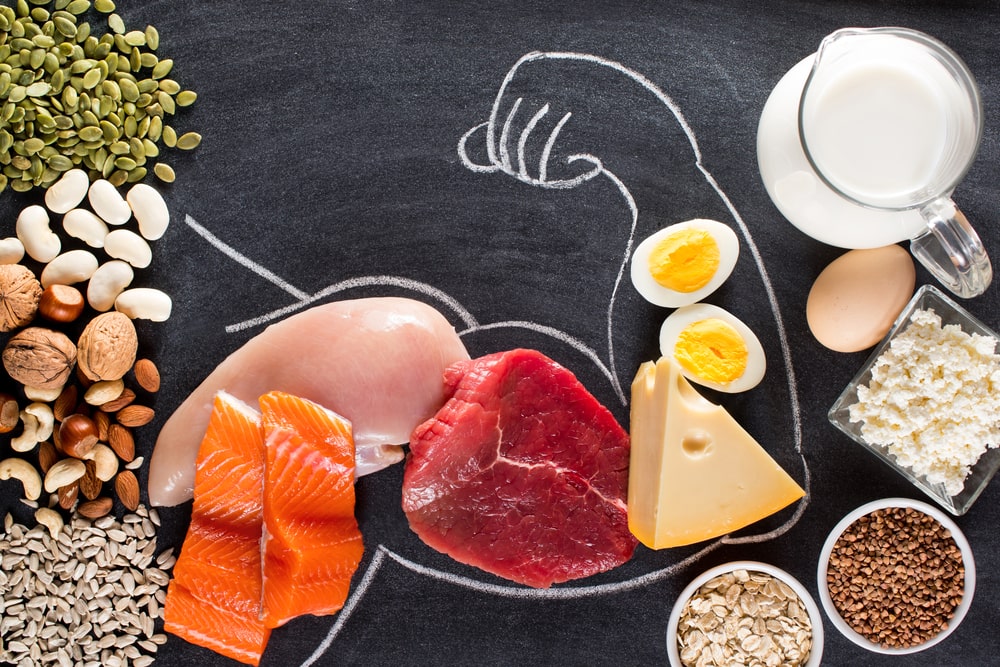
“Muscle Mass” is the most ignored component of health for the average Indian. We hardly bother to find out how much muscle mass we are carrying. We are attuned to this frame of mind that only an athlete, a sportsperson, a model, and these days, actors, should be bothered about muscle mass. Why should I? I am a regular office-going businessperson or housewife, taking care of my family and daily household needs; why should I be bothered about building or checking muscles? That’s so weird, isn’t it?
Let me help you understand why taking care of muscle mass is important for everyone. Your body’s main framework is your musculo-skeletal system, on top of which you have an adipose tissue layer and your skin, to give it an external shape. At the same time, all your vital organs reside within this framework. Musculo stands for your muscles and skeletal stands for your bones and joints that build your skeletal system. This is like an iron rod and frame, being supported by concrete in the high-rise building.

Put in an Early Effort
For a high-rise building to stand tall for the longest time (say, 100 years or more), what do you think is required? Of course, the high-quality iron frame needs to be well supported by high-quality concrete. Similarly, if your musculo-skeletal system is built in combination with high-density bones and is well supported by a higher density of healthy muscle mass, tendons, and ligaments, your body can survive longer, which leads to your longevity. Of course, such longevity also requires behavioral support in terms of managing stress and disciplined eating. You, me, and I can all live for a long time; our life span should not be limited to the age of 60 or 70 years.
When it comes to optimizing our health and longevity, our muscle mass and muscle strength play the most critical roles. Remember, our heart is nothing but a set of muscles! Our muscle mass and strength decline with age. The changes that occur to our muscles as we age can be profound. These changes, as we will discuss, can have dramatic effects on our health. Muscle mass starts to diminish as early as our 40s, if not taken care of well in time. 40 is not that old.
Muscle loss, which leads to a loss in muscle strength, is very common as we enter our 60s. If we do not focus on our muscle mass and muscle strength at a younger age, the risks of muscle loss increase multi-fold and become too difficult to overcome as we age.

Sarcopenia
Sarcopenia is a condition of age-related muscle mass loss. The decline of skeletal muscle tissue with age used to be a major health crisis in 3rd world countries during food scarcity in older adults. In many lower socio-economic strata, sarcopenia starts to appear as early as the 40s. Loss of muscle mass is predictive of a shorter lifespan and worse recovery after injury or surgery. Loss of muscles also leads to neurological decline, hormonal changes, chronic inflammation, and chronic illness, contributing to the deterioration of overall health.
Several factors can affect sarcopenic muscular decline. This can be broadly categorized into:
- Body’s inbuilt genuine dysfunction (normal decline).
- A lifestyle-induced condition that can be addressed if identified at an early stage (punctuated decline).
Normal Decline
The symptoms of the body’s inbuilt genuine dysfunction are:
- Decreased protein synthesis
- Anabolic resistance
- Decreased anabolic hormones
- Muscular dystrophy
- Mitochondrial dysfunction
- Impaired regenerative capacity
- Impaired vascular response

Punctuated Decline
The symptoms of the possible lifestyle-induced condition are:
- Insulin resistance
- Illness
- Insufficient energy
- Protein malnutrition
- Chronic inflammation
- Habitual physical activity decline
In a healthy body, our muscle tissue ideally should account for more than 50% of our body mass. Our muscles are metabolically very active in tissue, a lack of which can have dramatic consequences in adults. Muscles help us control our glucose levels, use glucose as fuel, and have a role in insulin resistance and type 2 diabetes. Loss of muscle mass contributes to poor health outcomes, fatigue, loss of function, disability, fall risk, frailty, and death.
Let’s Dive-in Further
I hope I have convinced you enough that maintaining and building lean muscle mass are essential. Let’s dive deeper to understand exactly what adding lean muscle mass means. When you are able to add on muscle tissue, it adds to your existing muscle fibers and tissue, increasing its density; on the contrary, you burn more fat. Your body’s leanness remains intact; you may add a tiny bit to your body weight, which is good for you (not all weights are bad, the same way in which not all calories are bad).
Muscle Synthesis and Muscle Breakdown
Muscle mass and protein synthesis are two continuous processes inside the body. Our body is continually breaking down muscle protein (Muscle Protein Breakdown, or MPB) and rebuilding the synthesis of muscle protein (Muscle Protein Synthesis, or MPS). When breakdown exceeds synthesis, we start to lose muscle mass. MPB and MPS processes occur on a micro-level (daily basis) as well as on a macro-level (long-term basis). Achieving a situation where muscle protein synthesis exceeds muscle protein breakdown is essential to counter the effects of ageing and inactivity.
Though building lean muscle mass is a very complex topic, let me simplify it here for your understanding. Based on my personal experience as well as being a sports nutritionist, I suggest people focus on these three areas that work wonders to build lean muscle mass:
- A diet with appropriate protein intake
- Resistance exercise
- Dietary essential supplements
Diet Remains the Key
You need to be sure that you are getting enough protein in your diet to have balanced nitrogen levels in your body. Your nitrogen balance is a way of saying that you have taken in enough protein. Protein ingestion gives you the building blocks that are necessary to synthesize muscle protein.
Resistance exercise is critical, too. You need to challenge your muscles if you expect to keep them and counter losing them. Muscles respond to load or force, regardless of your age. Yes, a 20-year-old can build bigger and stronger muscles than a 60-year-old. But a 60-year-old will grow larger muscles when he performs resistance exercises. And this cannot be achieved without proper nutrition and exercise.

Muscle Mass and Longevity
Muscle mass is a highly metabolic tissue how our tissues interact with our metabolic system matters. Visceral or belly fat is very toxic for our bodies, and we should make an effort to minimize that. Visceral fat is responsible for considerable chronic diseases such as type 2 diabetes, heart disease, and fatty liver disease (NAFLD). Muscles, on the other hand, improve our ability to manage glucose, dispose of glucose, and play a vital role in maintaining insulin sensitivity. For the same reason, anti-gravity exercises along with nitric oxide dump exercises are prescribed to people with severe insulin resistance or type 2 diabetes to improve glucose control.

Muscle mass correlates with a decrease in the chance of mortality. Simply put, the more muscle mass you have, the lesser the risk of dying from a chronic disease. It is proven that doing 2-to-3 hours of resistance-based strength training per week can reduce your risk of death by a factor of ten.
Muscle Mass Improves your Lipid Profile
Muscle mass is not directly related to your cholesterol level, but you need to look at the bigger picture. In general, if you are someone who is making a conscious effort to build muscle mass and improve your health, then you need to be equally engaged in other lifestyle changes, like eating healthy, to improve your health. This is how muscle mass is associated with your overall metabolic health. You reduce the risk of inflammation and chronic diseases and get an improved lipid profile. In this context, I will give you an example.
Personal Context
In 2016, when I took up a challenge against myself to reduce my abdominal fat, I got engaged in clean eating, accurately tracking my daily protein, fat, and carb intake. I started a structured resistance-based strength training program. Initially, I was wondering when my trainer used to put my workouts together with things like deadlifts, weighted squats, and a variety of bench presses. I was clueless about how strength training could help me get rid of my big belly. He was neither asking me to do 100s of floor crunches nor hours of treadmill sessions. By the end of 4 months, to my surprise, I had not only lost 4 inches from my abdominal area but also quite a good number overall on that weighing scale. However, a few miraculous things that happened internally within my body were that my fatty liver had turned completely healthy, my insulin resistance had come down to an insulin-sensitive zone, bringing me from pre-diabetic to a normal blood sugar zone, and my lipid profile was showing just great. And with time, it just kept on improving.
Your triglyceride and high-density lipoprotein (HDL) ratios can predict your risk of insulin resistance and type 2 diabetes. If you exercise to increase your muscle mass and eat a diet with an emphasis on eating enough protein and healthy fat, you will increase your HDL. If you are more conscious of your health and minimize your simple carbohydrate intake, you will lower your triglycerides. This will decrease your triglyceride-to-HDL ratio and improve your overall metabolic profile. And that is what has happened to me since 2016 when I started emphasizing resistance training alongside the change in my eating behavior.

Fall Risk, Frailty, and Demise: The Role of Muscle Mass
A complete exercise program includes aerobic conditioning, resistance exercises, high-intensity exercises, and balance training. Yes, balance training. While chronic diseases set the stage for our decline as we age, what ultimately leads to frailty and our demise is the risk of falling and the injuries sustained from falling. Weakness and loss of balance increase our risk of falling. Each fall becomes progressively harder to recover from. Eventually, you might fracture your wrist, shoulder, or hip. Sadly, nearly 50% of people die within a year of suffering a hip fracture.

Minimizing your risk of injury from a fall is directly related to your muscle mass, strength, and balance. Your muscle mass and strength also speed up your recovery after a fall-related injury. Your muscle mass starts to diminish in your 40s. Sarcopenia requires active effort if you wish to break the cycle that starts to appear in your 50s. Exercise when you are younger induces epigenetic changes in terms of muscle memory. Developing muscle memory is nothing but an epigenetic change induced by exercises on your muscle mass, which has a direct impact on your DNA expression. Exercise turns on some of those genes and decreases your risk of cardiovascular disease, insulin resistance, premature aging, neurocognitive decline, etc. It is, therefore, never too late (or too early) to initiate and stick with a resistance exercise program.
How to Improve the Muscle Mass?
There is no shortcut here. Preventing age-related muscle loss will require effort. You need to lift heavy things as well as push and pull heavy things. Recent research has shown that just a few sessions of resistance exercise lead to muscle growth in 60-year-olds. So, it’s never too late to initiate a resistance exercise program. Commonly, people over the age of 50 are afraid of hurting their backs or something else from exercise. Well, it is now proven that exercise improves osteoarthritis conditions in 50 and 60+ people. Everyone will experience back pain, shoulder pain, etc., at some stage of their lives, even after not doing any workouts. However, the risk of not performing the exercise can cost you more than the risk of performing the exercise under proper guidance.
Referencing my Journey
I will once again give an example. In 2016, at the age of 44, I joined a gym and joined a structured weight training program under a fitness trainer. Before that, the gym for me was 20 minutes on the treadmill and another 20 minutes on the ellipticals. A few stretches, then a sauna or steam bath, and back. After 6 months of weight training, I faced a lower back injury and a right shoulder joint injury twice. I had to undergo physiotherapy sessions. But then, I opted for a highly qualified sports injury specialist trainer, and thereafter, I never had any injuries, and in the process, I could improve my muscle mass.
Everyone Needs a Guide
To initiate a resistance exercise program, you will need some guidance. Which muscles should you exercise? That depends on what you are prioritizing. For longevity and fall risk, you want to be exercising your legs, thighs, calves, and glutes. These are our largest muscles and will have the most significant impact on your metabolism. These are also muscle groups that will minimize your risk of falling. I have seen 70-year-olds squat. I have seen them try lifting heavy on that bench press and doing deadlifts.
_1729663782.png)
Try to embrace squats, hip hinge exercises, and calf raises as part of your routine. Runners must concentrate on calf exercises, both seated and straight-leg calf raises. Your calf muscles are one of the first to succumb to the changes brought about by sarcopenia. It is essential to focus on them during our resistance exercise training.
Supplements for Maintaining Muscle Mass
There are no magic bullets. For those of you who are exercising, there is a fair amount of scientific literature to support the use of creatine to build muscle mass. Creatine works by getting into the muscle cell and bringing water with it. So you are increasing the size of each muscle cell. A larger muscle cell can generate more force. A more massive muscle is physically capable of helping you avoid injuries following a fall. Creatine will raise your blood creatinine levels, so you need to discuss it with your doctor if you want to take it.
Diet is Important
Adequate protein intake is critical. By eating enough protein, you are giving your body the building blocks it needs to improve muscle protein synthesis. A basic guideline is that you need 1–1.5 grams of protein per kilogram of body weight per day. Protein is made up of amino acids. They are the building blocks. It turns out that of all the available amino acids, leucine is the most important. Leucine is necessary and enough to result in adequate muscle protein synthesis, considering the basic minimum of the other amino acids that are available.
Protein requirements increase as you age. You need more protein to combat sarcopenia, and you need more protein because your muscle-building machinery is not as efficient. A reasonable guideline for an average-sized person is to get at least 25 to 30 grams of protein per meal, assuming you are eating three meals.
I have met so many people in their late 40s and early 50s, and they are afraid to exercise. They are so scared of hurting themselves. That is a reasonable fear. Injuries might happen if you perform resistance exercises. But you should fear the effects of sarcopenia more. You should fear the onset of frailty more. Workout under the supervision of an able coach. A workout based on your daily strength challenges your muscles and helps you live a happier and healthier life. It’s your competition against your muscles.
Just check with your doctor or cardiologist if you have a history of heart disease or shortness of breath before starting resistance training.
Conclusion
It is very important to take care of our muscle mass, no matter whether we are young or old. A good muscle mass is integral to our overall health and well-being. It helps bones recover quicker after a fall or injury. Resistance training and a balanced diet are the best ways to go about it.


.png)


